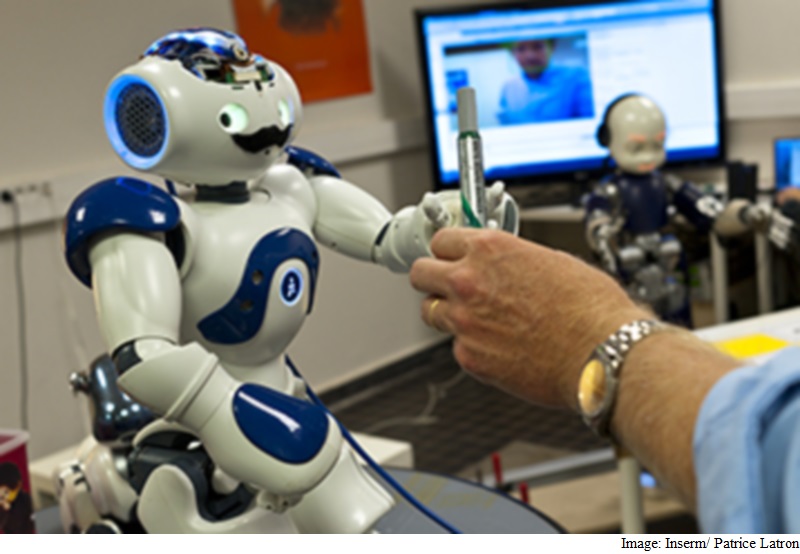
A team of French researchers has developed “an autobiographical memory” for the only robot on the International Space Station (ISS) which will help the robot liaise between the astronauts that change every six months in order to pass on information.
In order for a robot to understand cooperative behaviour, researchers developed a system whereby a human agent can teach their new “Nao” robot new actions through physical demonstration, visual imitation or voice command.
These individual actions are then combined into procedures and stored in the robot’s autobiographical memory developed by researchers, thus enabling the robot to reproduce them for other human agents if needed.
“This technological progress could notably be used for operations on the orbiting laboratory,” said senior researcher Peter Ford Dominey from the Institut cellule souche et cerveau (Inserm/Université Claude Bernard Lyon 1).
Researchers set up this autobiographical memory system to meet the challenge of cooperation between humans and robots, with the humanoid “Robonaut 2” which is now permanently flying aboard the ISS.
Autobiographical memory includes events that were personally experienced, along with their context.
It makes it possible to date and locate memories, and to determine who was present during the event.
With human beings, autobiographical memory helps build an individual’s personal history.
The transmission of information on board is essential since crews change every six months.
Researchers are now hoping to test their “Nao” robot in the real conditions of space operations with zero gravity.
They would also like to develop another area of application, assisting the elderly, with the robot this time playing the role of a personal memory aid.
“Robonaut 2” is a humanoid robot resulting from the Robonaut programme, a close collaboration between Nasa and the US Defense Advanced Research Projects Agency (DARPA).
A unit was delivered to the ISS in February 2011 to control the robot’s operation in weightlessness.
It was designed to assist the work of astronauts in complicated situations, especially during extra-vehicular outings.
The new results were presented at the international symposium on robot and human interactive communication in Kobe, Japan, recently.
[“source-gadgets.ndtv”]





